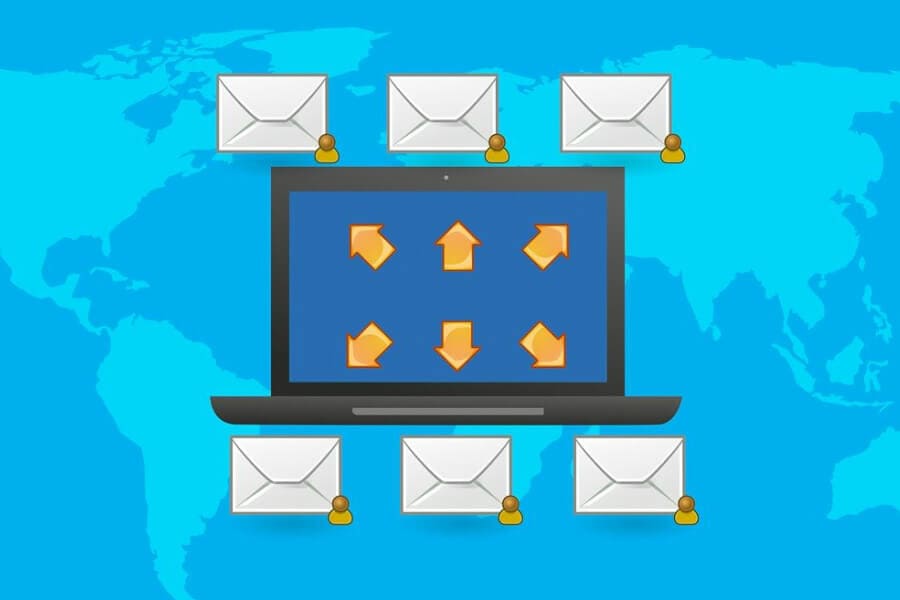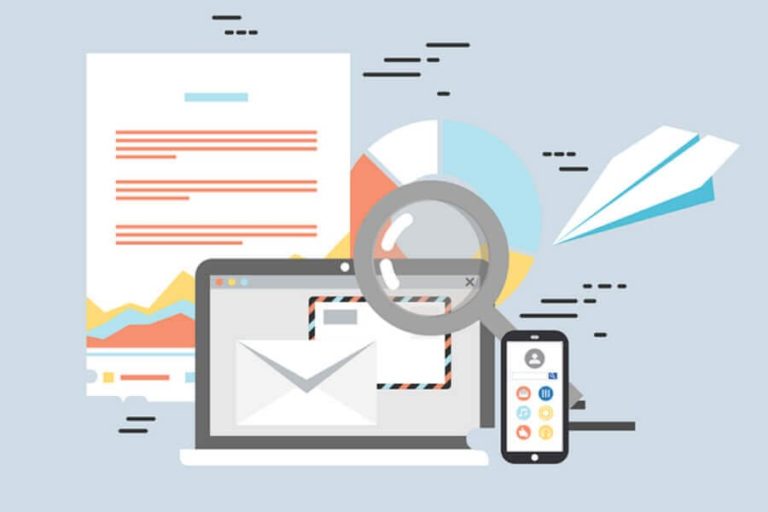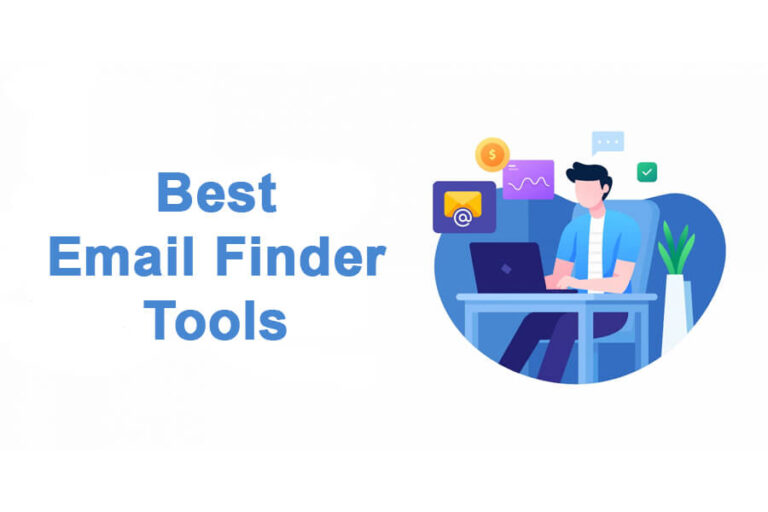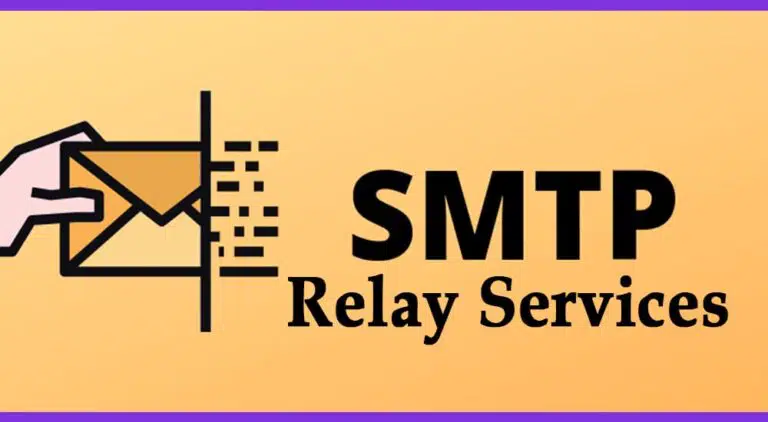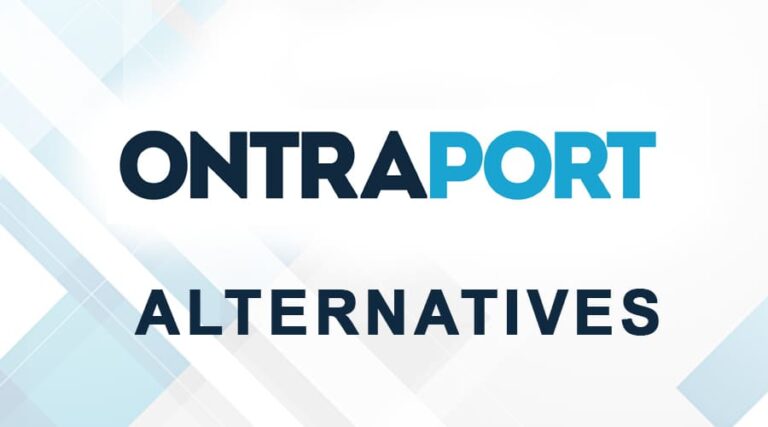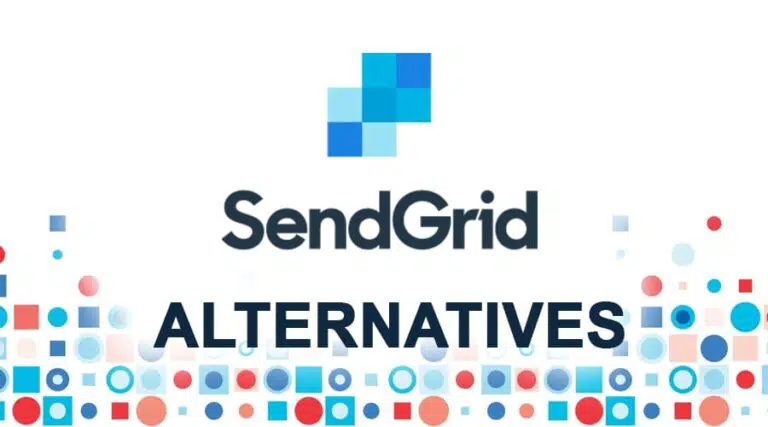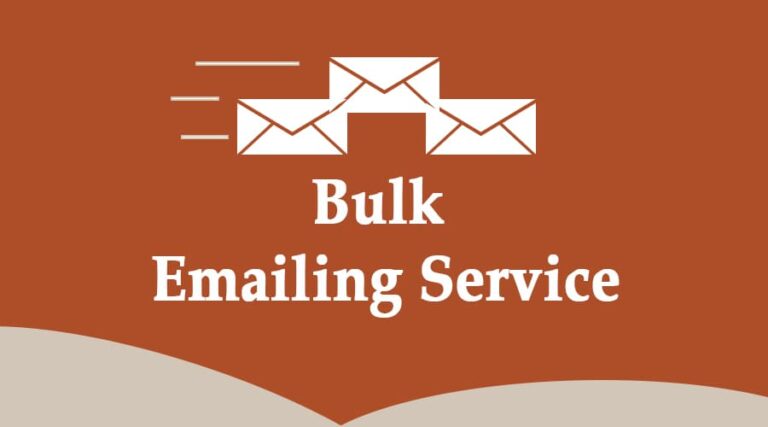Email marketing has immense benefits, and you must use the best email marketing strategies to realize these benefits. These practices can help you grow your audience and sales.
For many businesses, email marketing has been the best marketing channel. Email volume is growing, and research shows we will receive around 350 billion emails by the end of 2023.
Reaching someone’s inbox and getting their attention are two distinct things. You should have their permission to send the message. Only then should you send the message in the right format so they can understand your message and take action.
18 Best Email Marketing Strategies
The following are the best email marketing strategies:
- Personalize your message
- Write a better subject line
- Segment your subscribers
- Send mobile responsive emails
- Send welcome email
- Create workflow automation
- Re-send the campaign
- Offer “lead magnet”
- Targeted opt-in
- Have a sales funnel ready
- Use the different sign-up forms
- Be consistent
- Increase engagement
- Re-engage/delete inactive subscribers
- Send exclusive content
- Use one call to action per email
- Send emails at the right time
- Check content for errors
1. Personalize Your Message
Address your subscribers by their first name. Personalization does not mean you should write personal emails to each individual. Calling your subscribers by their first name is enough.
This practice is common in eCommerce businesses, and you might have noticed that Amazon addresses their customer by their first name in their marketing emails.
Research shows that personalized emails deliver six times more transactions. However, 70% of marketers fail to use it in their email marketing strategies because they don’t collect subscribers’ names, as they are afraid that asking for this extra information will affect the conversion rate.
An extra field in the lead generation form is a conversion killer. Therefore, in favor of more subscriptions, marketers ignore personalization.
If your lead generation form does not ask for this information, add it, and test the results.
But, if you are in eCommerce, you must use this email marketing strategy.
Let’s move to the second email marketing strategy.
2. Write a Better Subject Line
Ensure the subject line is neither too long nor too short. Make it around six to ten words, as a study has shown that a subject line with six to ten words has the highest opening rate.
Subject lines that are too short may not deliver your message, and email services will crop longer ones so your audience will not see the complete message. These will affect your email opening rate.
What you write in your subject affects the open rate. Avoid spam trigger words such as free, hurry, and earn $. Email marketing service providers are rigid in stopping spam messages. If you regularly use these words, email services may mark your email as spam or block you.
These days, I am noticing a trend that marketers will insert “Re-” before the subject line. It indicates that the email is a reply to your email, and you will open it out of curiosity. Do not use these gimmicks, as you cannot fool a subscriber more than once. Once they identify that it is a gimmick, you will lose their trust, and they may unsubscribe or, worse, can report you as spam.
Many studies show that around 50% of emails are opened because of their subject line. Spend time crafting your subject line and avoid using tricks.
Come up with at least two distinct subject lines and use A/B testing to increase your open rate further.
Use your email ID to send marketing emails. Subscribers want to deal with a real person, not a post-title or a bot.
If you use an email like admin@massilah.com or no-reply@massilah.com, the audience will fail to connect with you. Give your readers a chance to connect with you.
3. Segment Your Subscribers
Segmenting your subscribers makes your campaign targeted, so the open rate is high for such campaigns.
For example, you can separate your subscribers from your buyers. Once a subscriber buys your product, you can stop sending them marketing emails for the same product.
Segmentation is essential, and it may affect your conversion and trust. For example, if you ask subscribers to repurchase a product, it will only annoy them.
A HubSpot study shows that a segmented list produces better results.
You might consider how to get subscribers’ information to segment them. You can segment them based on demographics if you don’t have any information. Your email marketing service provider will provide this information.
4. Send Mobile Responsive Emails
Looking at your Google Analytics or reports in your email marketing service provider, you will notice that over 50% of your audience is accessing your content through mobile devices. More people are now using mobiles than desktops to access the internet.
Text-based or minimalist emails are optimized for mobile devices. If you use images in your email, you must optimize them for mobile devices and make sure they are correctly formatted.
I have the following recommendations for optimizing your campaign for mobile devices:
- Use text-based email or select a minimalistic design.
- For a call to action (CTA), use text-based links, as these links are easier to insert and convert better.
- Send a test email to yourself and open it on different mobile devices.
5. Send a Welcome Email
I often see that subscribers receive an email with a link to download the lead magnet when they join a mailing list. There is a welcome message and a lead magnet in a few other cases.
When new subscribers join your mailing list, you must welcome them using a welcome email.
Give them the lead magnet if you have promised one, and then explain what they should expect next.
Tell them how often they will receive your email and what kind of emails you will send them. This will help you set their expectations.
6. Create Workflow Automation
Workflow automation is a great tool to increase engagement.
The best example of workflow automation is a welcome email series. You can start this automation when a subscriber joins your list.
You can also create a separate email course and a workflow for it—for example, a 7-day course to learn keyword research.
Create a separate landing page for this course or insert a link to subscribe to this course in your newsletter. Once a subscriber clicks on this link will trigger the workflow automation.
Triggered emails have a high open rate of around 50%, which is almost double the open rate of traditional campaigns.
Forrester’s research shows that trigger-based emails can generate four times more revenue and 18 times higher profits.
7. Re-send the Campaign
For any campaign, the open rate varies between 20% and 30% because many subscribers did not open the mail in time, the email gets buried, and some have lost interest in your campaign.
To give them another chance, you can send a re-send campaign. This campaign sends emails to those subscribers who did not open your email in the first round. This increases the deliverability of your email.
Creating a re-send campaign is easy. I have used two email marketing email providers, MailChimp and MailerLite, and both services provide a facility to send re-send campaigns.
You can make three changes while sending a re-send campaign:
- Change the subject
- Add the content above the original message
- Update the original message.
Select the option and send the campaign. You should send a re-send campaign after three days.
The open rate for the re-send campaign is always lower than the original campaign, and most interested subscribers have already seen it. But it helps you get more views.
Creating a re-send campaign takes a few clicks, but the results last longer. If you send many campaigns, reserve this strategy for important ones.
8. Offer Lead Magnet
Getting subscribers is difficult unless you are a super expert or a celebrity. You must offer “value” to visitors so they can exchange the information and become your subscriber.
This value is known as the “lead magnet.” This lead magnet is usually an eBook, but you can also offer an Excel template, PPT, or DOC file. This lead magnet motivates your visitors to subscribe to your mailing list.
Don’t think the lead magnet is only useful to attract visitors to become your subscribers. You can use a lead magnet to hyper-categorize your subscribers. This hyper-segmentation will increase the engagement of your list, and your open rate and click-through rate will skyrocket.
If you have an eCommerce store, you can offer a discount coupon code as a lead magnet to attract subscribers.
9. Targeted Opt-in
Visit your Google Analytics and look for four or five top-performing posts. You can create a separate opt-in form for these posts and offer them the same post’s upgraded content. If the post is huge, i.e. more than 10,000 words, you can offer the pdf.
The idea is to create a lead magnet for each post.
This email marketing strategy is okay for a few posts. However, the list management will be messy if you do it for more posts. Use this email marketing strategy for a few outperforming posts.
10. Have a Sales Funnel Ready
A sales funnel is a sequence of well-designed pages that guide your visitors to take certain actions. The action can be to join your list or buy a product.
Creating a sales funnel is easy with the help of sales funnel software.
If you don’t want to invest in sales funnel software, use a landing page builder to build a squeeze page and collect leads. Once you get enough traction or response, you can switch to full sales funnel software to realize the full potential of your content marketing.
11. Use Many Sign-up Forms
I see many bloggers using only one sign-up form on the sidebar. Many studies show that the opt-in form in the sidebar has the lowest conversion rate.
You should use sign-up forms in different places. The most prominent place can be above the fold on your home page. Then you can use it below the post content. The most important opt-in form is the exit intent pop-up form. This form is triggered when a visitor intends to close the page. The conversion rate for the exit-intent form is excellent.
For desktop users, the exit intent pop-up form is okay, but it might create problems on mobile devices. While browsing sites, I often get a pop-up form, and they are often difficult to close. It is a nuisance.
Use good software to design a mobile opt-in form and test it. A poor opt-in can hurt conversion. Don’t show your pop-up form immediately. Let the visitor browse your site for a few moments and then ask for a subscription, or do it when they are about to close the tab.
12. Be Consistent
Don’t send too many or too few emails.
Sending too many emails will annoy your subscribers. However, you should not send them too few emails. If you do so, they might forget who you are, and when you send them an email, they will unsubscribe or report you as spam.
Find what works with your audience and stick with it. You should set this expectation in the welcome email. You can say that you will send them your newsletter once a week or once a month.
Send them emails consistently; it keeps your list healthy and active.
You may not see the results in the beginning. Don’t get demotivated; be consistent and patient, and you will see the results soon.
13. Increase Engagement
An engaged list is more profitable. You must take proactive action to keep your list active and engaged. To increase engagement, you can ask questions and ask them to reply. This motivates subscribers to reply.
You can run surveys or quizzes or offer a giveaway. Offer them your help by asking about their biggest challenge.
Engagement increases deliverability. Gmail automatically sends campaign emails to the promotional emails folder. But once a subscriber communicates with you, your promotional email will go to their primary folder.
14. Re-engage/Delete Inactive Subscribers
As your list grows, you will notice that many subscribers do not open your emails. These are inactive subscribers and affect your open rate and cost you money.
You have two options to manage them: re-engage or delete them.
To re-engage them, segment these inactive subscribers and send an email. Ask them if they still want to be on your list and ask for feedback. If they do not respond within one week, clean the list.
The second option is to delete them straight away. We tried to re-engage inactive subscribers on our list two times, but their response was poor. Therefore, we deleted inactive subscribers who did not open our emails in the last six months. We are using MailerLite to remove inactive subscribers with one click.
Now we don’t send re-engage campaigns and instead delete inactive subscribers every month.
You can try a re-engagement campaign. You can use this technique again if the subscribers’ response is good. But if the response is not encouraging, you can delete them, and next time, don’t waste your precious time on unproductive tasks.
If there is any subscriber who did not open my email in the last six months, I consider them to be an inactive subscriber. You can reduce your threshold if you think the duration is too long. Select any time frame between three to six months.
15. Send Exclusive Content
You should provide value to your subscribers. Send them exclusive content and let them know that it is available to your email subscribers, and it’s not even on your blog. Make them feel special.
I have seen many bloggers send only marketing emails; they never send any informational or exclusive content. I have subscribed to some newsletters whose authors preached that we should send 80% informational and 20% promotional content. However, I received no informational content; all I received were sales and marketing emails.
In those cases, I unsubscribed.
Many bloggers provide some value with welcome automation. But when it ends, they send only marketing emails.
If you want a healthy and engaged list, send your subscribers exclusive content. Exclusive content helps you build strong connections with them.
16. Use One Call-to-Action Per Email
A call-to-action (CTA) is a link or a button you insert in your email and ask your audience to act on it. A call to action can be buying a product, clicking on a post link, filling in a survey, answering questions, etc.
I have found text links are more effective. Use the link or button multiple times in your email, preferably at least three times: in the beginning, middle of the content, and end.
Don’t use multiple CTAs in your email. It will dilute the effectiveness of your CTA, and the audience will be confused. Subscribers usually open an email only once, and most of the time, they will click on one link and then close the email.
Don’t confuse them, and use this opportunity strategically.
17. Send Emails at the Right Time
If you don’t send emails at the right time, your email gets buried under other emails, and subscribers may ignore it.
Every geographic region has a different time zone, so the best time to send emails is also different.
Also, some parts of the world have different weekends (for example, Fridays and Saturdays). Consider these factors while sending your campaigns.
You might wonder about taking care of many time zones and different weekends. Don’t worry; it is straightforward. I believe all email marketing service providers can send emails at optimized times. Select this option while sending your campaign, and they will handle it.
Don’t send emails immediately. Use this option only if you have some vital information and cannot wait. For example, you have a deal ending in three hours.
Now, the last best email marketing strategy.
18. Check Content for Errors
Before sending any campaign, ensure that the content is error-free. Content with grammatical errors is a conversion killer. If your content has grammatical errors, subscribers will not trust you and may unsubscribe.
With email marketing, grammatical errors are common because email usually has a small amount of content, and we pay little attention to grammatical errors. Using grammar-checking tools ensures that your content is error-free.
You can use a grammar-checking tool or ask your editor to check it.
Summary
Email marketing is the best form of content marketing and delivers excellent results if you follow the right email marketing strategies. You are in control here, and search engines’ algorithms cannot affect your business. You only need to send the right email to the right audience with optimized content.
Email marketing works because it is the best method to reach and connect with your audience. Using these best email marketing tactics will increase the engagement of your list, and your sales will increase.
Keep testing the variations, and once you get the best combination of strategies, you can follow and tweak these strategies for the best result.
Which email marketing strategy do you find best for your marketing? Please share your thoughts in the comments section.

